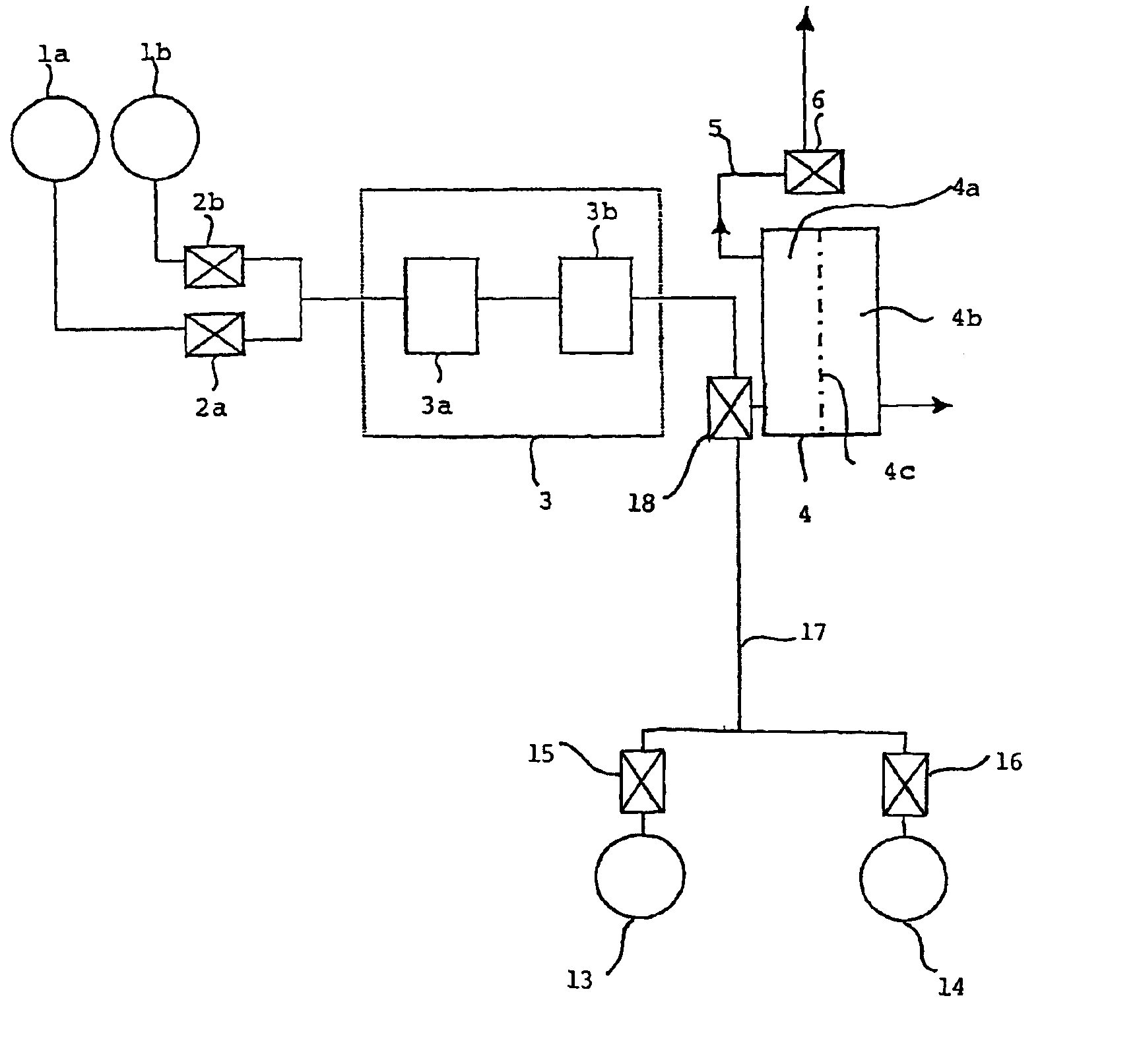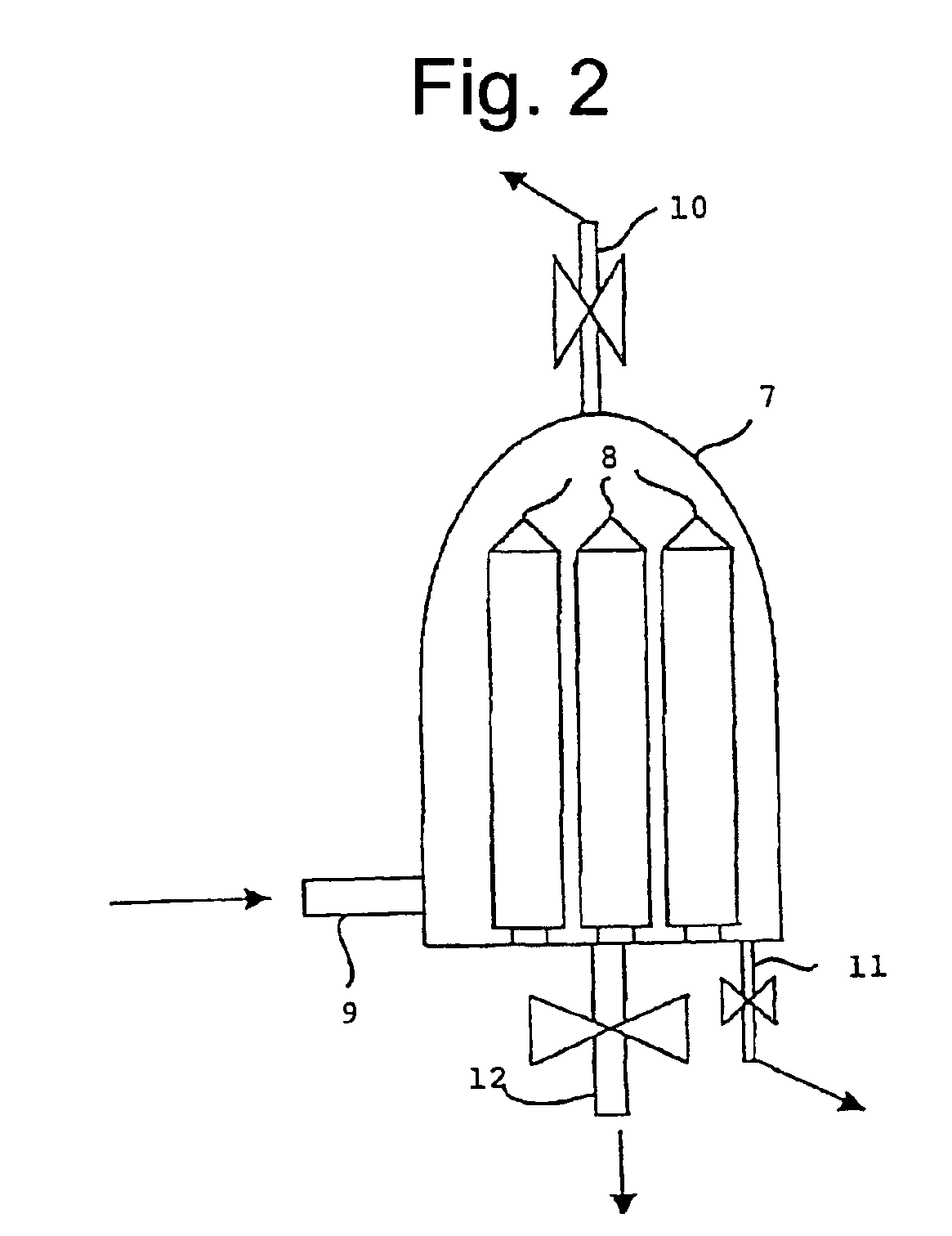Method for carrying out an integrity test for filter elements
a filter element and integrity testing technology, applied in the field of integrity testing of filter elements, can solve the problems of inability to detect unacceptable increased gas flow, and inability to carry out integrity testing
- Summary
- Abstract
- Description
- Claims
- Application Information
AI Technical Summary
Benefits of technology
Problems solved by technology
Method used
Image
Examples
example 1
[0090]The method according to the invention was carried out by means of diffusion measurements at a test pressure of 1 bar using four separate Sartocon-II cassettes made by Sartorius AG. The membrane of cassette No. 4 was mechanically damaged. The test gases used were air and CO2. Furthermore, the same measurements were simultaneously made with three intact cassettes (No. 1-3), again with air and CO2. Finally, the method was simultaneously carried out using two intact (No. 1 and No. 2) and one intentionally damaged cassette (No. 4) under the same test conditions, again using air and CO2 as test gases. The device used to control the pressure and to determine the gas volume was a Sartocheck-3-EPS type device (Sartorius AG). The filter cassettes were cross flow units of the type 3021442906E-SG (Sartorius AG). Each filter cassette had a total membrane area of 0.6 m2.
[0091]The measuring parameters are given in Table 2. The measuring time differs because the optimal operating range of the...
example 2
[0097]The method according to the invention was carried out with three separate Sartorius AG Sartocon-II cassettes by means of diffusion measurements at a test pressure of 0.5 bar. The membrane of cassette No. 3 was mechanically damaged. The test gas used was air and the wetting liquids were ethanol (96%) and water. The same measurements were conducted simultaneously with two intact cassettes (No. 1-2), again using ethanol (96%) and water. The method was then carried out simultaneously with one intact cassette (No. 2) and one deliberately damaged cassette (No. 3) under the same test conditions, again using ethanol (96%) and water as wetting liquids. Finally, the method was carried out simultaneously with two intact cassettes (Nos. 1 and 2) and one deliberately damaged cassette (No. 3) under the same test conditions, again using ethanol (96%) and water as wetting liquids. The device used to control the pressure and to determine the gas volume was a Sartocheck-3-EPS type device (Sarto...
PUM
| Property | Measurement | Unit |
|---|---|---|
| area | aaaaa | aaaaa |
| areas | aaaaa | aaaaa |
| volumetric gas flow rate | aaaaa | aaaaa |
Abstract
Description
Claims
Application Information
 Login to View More
Login to View More - R&D
- Intellectual Property
- Life Sciences
- Materials
- Tech Scout
- Unparalleled Data Quality
- Higher Quality Content
- 60% Fewer Hallucinations
Browse by: Latest US Patents, China's latest patents, Technical Efficacy Thesaurus, Application Domain, Technology Topic, Popular Technical Reports.
© 2025 PatSnap. All rights reserved.Legal|Privacy policy|Modern Slavery Act Transparency Statement|Sitemap|About US| Contact US: help@patsnap.com



